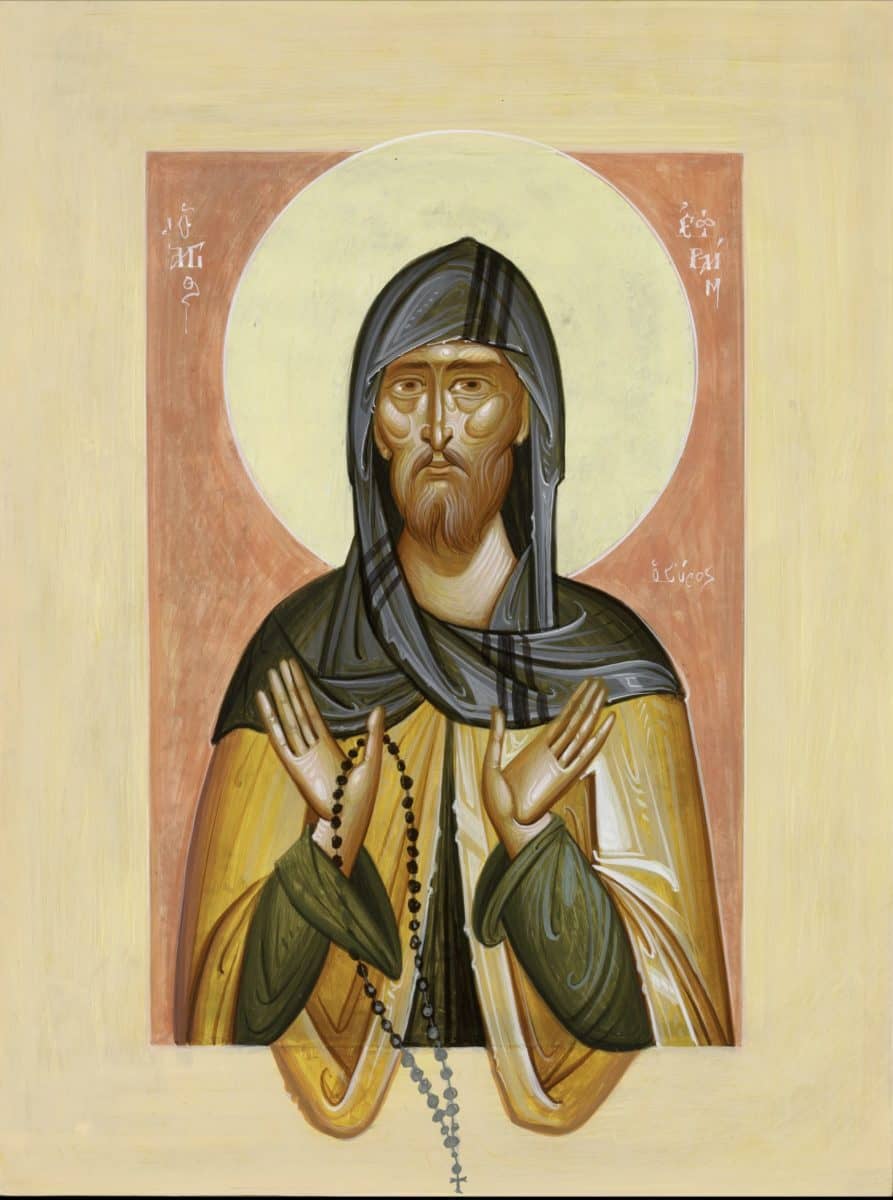Posts Tagged ‘theophany’
Poetry as Theology: Reflections on Ephrem the Syrian and Richard Wilbur
Introduction Blessed is He who has appeared to our human race under so many metaphors![i] Asked to reflect on the relationship between poetry and theology, I always reach for the above lines of Ephrem the Syrian’s. In some respects, all my thoughts on this matter are circular, starting from and returning to the…
Continue reading »Making Art with an Axe
As we have just passed through the season of Theophany, I have been brought to ponder what Theophany means for art, especially liturgical art. The icon of Theophany offers much to reflect upon as we gaze at the elements it brings together. Just as in our lives and in the world, in the making of Christian…
Continue reading »The Samaritan Woman, Baptism and the Hexagon
A little while ago an iconographer wrote me to ask advice on what shape he should make the well in an icon of the Samaritan Woman, who is known in tradition as St-Photini. After answering him, I realized that this detail in the icon is a good example of how so much can be hidden…
Continue reading »Heaven and Earth in The Icon
This is post 3 of 4 in the series “Ancient Cosmology Today” Jonathan Pageau uses a phenomenological approach to explain traditional cosmology and its symbolism, explaining in what manner it is crucial to our experience of being in the world. Most of The Time The Earth Is Flat. Where is Heaven? Heaven and Earth in…
Continue reading »Aesthetic Nepsis, Enargeia and Theophany: Looking for the Christian Image
This article was written by Dr. Cornelia Tsakiridou, associate professor at LaSalle University and author of Icons in Time, Persons in Eternity. The content is based on the talk Dr. Tsakiridou gave at Princeton University on March 13th, 2014 which was sponsored by Princeton’s Orthodox Christian Fellowship and Florovsky Society. Introduction (1) Saint Porphyrios the Kausokalyvite used to…
Continue reading »Theophany and What Sacred Art Does
You enter a silent museum. Standing at an appropriate distance, you gaze at a piece of art set against a clinically white wall. The art is lit as to leave no glare or shine and you as the viewer leave no shadow on it. Enough space is allotted all around the art so to be admired without…
Continue reading »




